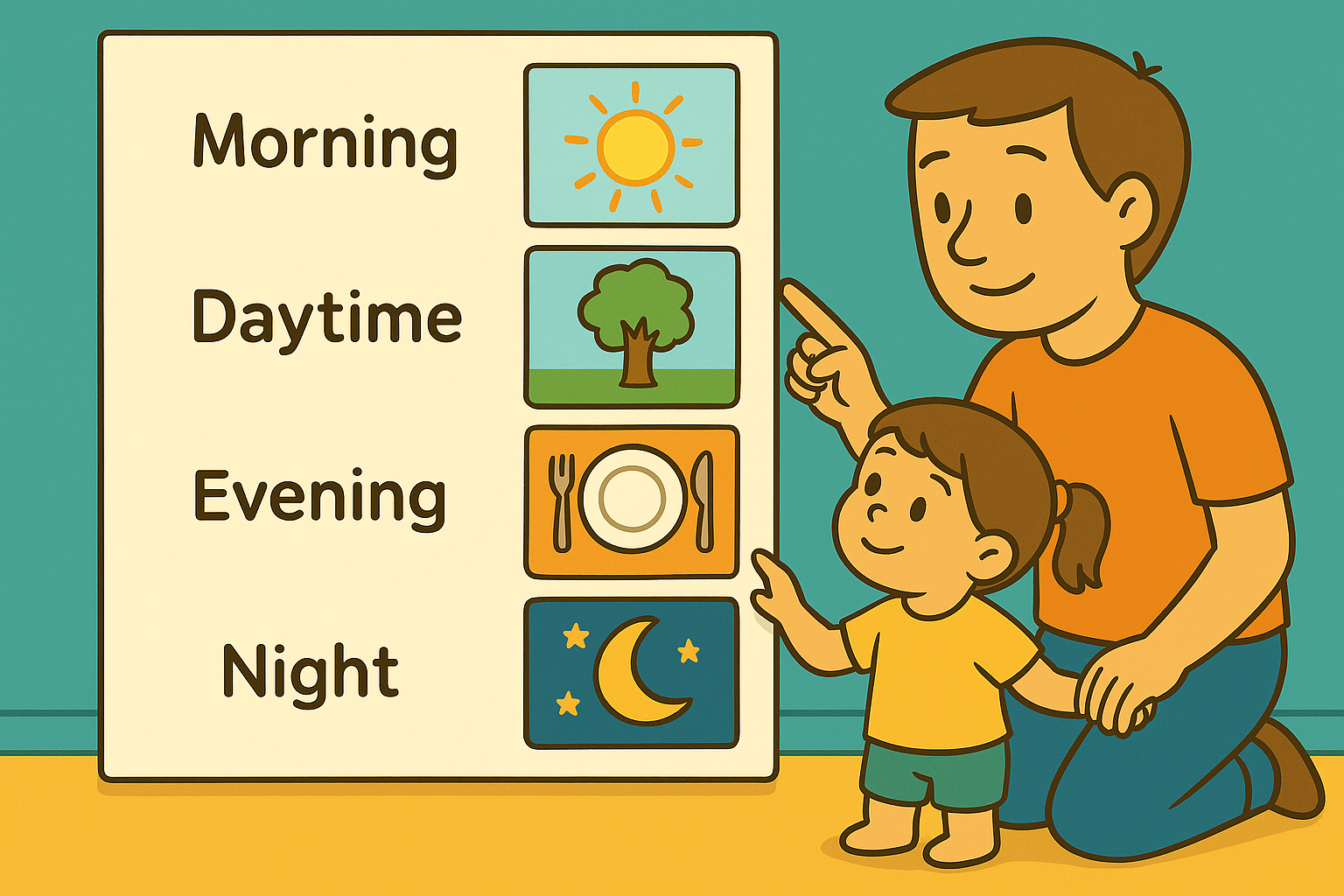Morning to Evening: Building a Flow That Works
Morning to Evening: Building a Flow That Works
Why Daily Flow Matters More Than Perfect Schedules
Children don’t need perfectly structured days — they need predictable flow. A gentle rhythm from morning to evening helps reduce anxiety, support emotional regulation, and limit power struggles. Flow creates continuity — the sense that one moment leads meaningfully into the next. Without it, children may feel like their day is made of disconnected puzzles. With it, the whole day starts to feel like a story — one in which they know their role and pace.
The goal isn’t to control every hour. It’s to help children feel carried rather than pushed through their day.
Understanding Your Family’s Natural Energy Patterns
Before building flow, observe how your family naturally moves:
When do children have the most energy?
When do moods dip?
When is creativity strongest?
When does rest come easily?
When do transitions feel hardest?
Noticing daily rhythms helps build routines that support energy rather than fight it. This aligns with the ideas in Family Reset Days for Overwhelmed Weeks, where observing energy is key to creating rhythm that heals rather than drains.
Morning: Setting the Tone Gently
Mornings should feel like a warm welcome — not a race. Small shifts can make a big difference:
Soft wake-up routine (stretch, dim lights, gentle greeting)
Predictable breakfast rhythm
Visual cues for each morning step
Few choices but visible ones
Unrushed transitions
Children need time to “arrive” in the day. When morning rhythm feels safe, the rest of the day often follows peacefully.
Midday: Building Movement and Connection
Daily flow needs physical release in order to keep emotions regulated. Midday is a great space for:
Outdoor time
Movement break indoors
Snack rhythm
Short mental reset activities
Nature walk or fresh air moment
Movement often acts as a reset button — helping children restart emotionally before overwhelm begins. Similar strategies were used in Using Routine to Support Emotional Regulation, where movement is treated as a tool, not a distraction.
Afternoon: Planning for Transition Sensitivity
Children often struggle after school or mid-afternoon. Flow can protect this sensitive window with:
“Arrival routine” (wash hands, snack, hydration)
Calm corner or quiet activity
Soft music or dim lights
Visual choices for what comes next
These steps buffer against overstimulation and ease the shift from school mode to home mode.
Evening: Preparing the Body for Rest
Evenings don’t need schedules — they need slowed rhythm. This may include:
A fixed “wind-down time”
Dimmed lights across the home
Shared cleanup or soft music
Dinner conversation time
Calm play, reading, or puzzles
The home should shift tone — even if bedtime isn’t immediate. This approach is echoed in The Benefits of Synchronized Bedtimes, where shared calm lays the groundwork for emotional closure.
Predictable Anchors That Support Flow
Flow thrives on gentle anchors, not rigid rules. Try:
Morning hydration
Family dinner question
Movement break after lunch
Reset moment before bedtime
Weekend breakfast ritual
Anchors give children confidence in what’s coming next — even when schedules change.
Introducing Flexibility Within Flow
Parents often fear that flexible routines will lead to chaos — but children thrive when flexibility is guided:
Offer controlled choices: “Reading or drawing next?”
Use visual cards that can be rearranged
Keep “open space blocks” during the day
Say: “Let’s see what our energy is ready for.”
This mirrors strategies seen in Creating Routines That Adapt as Kids Grow, where growth and choice become part of the rhythm.
Signs Flow Is Working
You may notice:
Transitions happen with less resistance
Children begin anticipating next steps
Fewer reminders are needed
Play deepens — because pressure lifts
Even busy days feel more manageable
Flow isn’t loud — it’s subtle. You feel the difference before you see it.
Repairing Flow When It Falls Apart
Flow will always break occasionally — and that’s okay. To gently reset:
Take two shared breaths
Return to the nearest anchor (snack, calm space, water)
Lower voices and movement
Use a phrase like:
“We can restart our flow from right here.”
Recovery is part of rhythm — not a sign of failure.
The Real Purpose of Daily Flow
Flow is not about productivity — it’s about permission. Permission to slow down. Permission to adjust. Permission to reconnect. When families build flow from morning to evening, children learn that time doesn’t have to push them — it can hold them.
This content is for educational purposes and is not a substitute for professional medical or psychological advice.
Popular Parenting Articles


